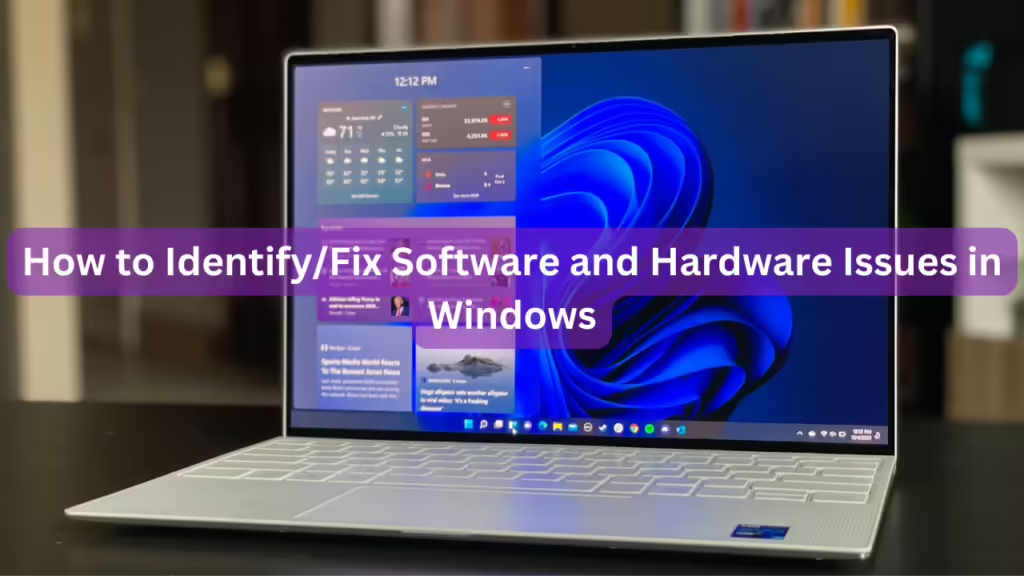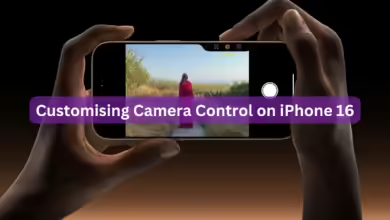How to Identify/Fix Software and Hardware Issues in Windows

Almost every user faces problems in Windows at some point. However, it’s not always the software’s fault – hardware issues can also have similar symptoms. If you are having trouble distinguishing between hardware and software problems, this guide can help determine the cause.
Signs of Software Problems
Any problem that occurs in Windows can be attributed to software, but it’s not always the case. However, some signs only appear when the problem is software-related. If you notice the following signs, there is a good chance it’s a software problem.
Individual Program Crashes
If a specific app is crashing – like Microsoft Word or Chrome – and other apps run fine, it’s probably a software issue, like compatibility conflicts, corrupted files, or bugs in the program’s code.
Full System Crashes with Warning
While there are many software and hardware reasons for system crashes, software problems are usually accompanied by errors. If you see a BSOD or an error like “Critical Process Died” before the system crashes, look for software causes.
Error Messages
Most error messages are related to software, as hardware issues are unexpected and show symptoms without an associated error. Some inevitable hardware issues, like heated or failing hard drives, can generate error messages, but most errors are generally software-related.
Problems Occurring Right After an Update
If a problem occurs right after an update, like Windows, drivers, or an app update, it’s software-related.
Malware or Virus Symptoms
Malware is malicious software, so any symptoms suggesting you have been infected indicate a software issue. Common malware signs include sudden slow performance, unauthorized installation of programs, and disabled security apps.
Methods to Diagnose a Software Problem
If you notice any of the above problems, there are many ways to confirm it’s a software issue and pinpoint the cause.
Search for the Error Online
Since most software-related issues are accompanied by an error message, you can search for details online or ask an AI chatbot for better solutions.
Boot in Safe Mode
Booting in Safe Mode can confirm it’s a software issue. Access Safe Mode from the Windows Recovery Environment by going to Troubleshoot -> Advanced options -> Startup Settings. If your PC boots fine into Safe Mode, it’s probably a software issue due to drivers, third-party apps, or system files.
Check Event Viewer Logs
Windows Event Viewer can give a lot of information about errors and problems. Open Event Viewer, navigate to Windows Logs -> Application or System, and look for Warning or Error entries.
Fix Corrupted System Files
For software-related crashes or unexpected app errors, corrupted system files are usually the cause. Running SFC and DISM scans can fix this issue.
Update the System
Outdated Windows and drivers are another common cause of software problems. In Windows Settings, go to Windows Update and click on Check for updates.
Run a Full System Scan for Malware
If you notice malware symptoms, run a full system scan with an antivirus program. Open Windows Security -> Virus & threat protection -> Scan options -> Full scan.
Reinstall Windows
If you are unable to locate the problem, reinstalling Windows should fix it. Try reinstalling Windows while keeping your data, and if that doesn’t work, perform a clean install.
Signs of Hardware Problems
Most hardware problems won’t even let you turn on the PC, but some may only appear while using the PC – especially in the early stages. The following signs indicate a hardware problem.
System Not Passing POST
When you turn on your PC, it runs a Power-On Self-Test (POST) to confirm critical components like RAM, GPU, and CPU are working. If POST fails, you won’t see the manufacturer’s logo and may hear beep noises or see a black screen.
Full System Crashes Without Warning
If the whole system crashes abruptly without any warning/error, it’s probably due to a hardware issue, which halts the system usage without giving time to software to generate an error.
Display Issues
System-wide display issues like glitches, artifacts, and black screens are usually related to GPU or monitor problems. Flickering could be a software issue, but widespread display issues are often hardware-related.
Visible Damage
Open the PC case (laptops may need professional help) and look for signs of damage, such as burn marks, frayed wires, or bulging capacitors. If present, repairs or replacements are needed.
Heating Issues
If your CPU temperature consistently goes above 90°C (194°F) or GPU above 100°C (212ºF), it means your hardware is struggling with cooling. Some software tweaks can help, but hardware fixes are often necessary.
System Failure Under Load
If the PC crashes when running resource-heavy tasks like games or video rendering, it’s usually a hardware issue.
Methods to Diagnose a Hardware Problem
When diagnosing hardware problems, your options are limited, as your PC either won’t turn on or Windows won’t show related errors. However, there are still ways to diagnose common problems.
Use Hardware Diagnostic Tools
If your PC still turns on, diagnose hardware issues using built-in or third-party diagnostic tools. Many tools will automatically detect problems, but some may require further analysis.
Inspect Physical Connections
Even a single loose cable or component can prevent a PC from turning on. Unplug the power cable, open the case, and inspect each connection. Try reseating the GPU and RAM, as these often feel secure but may still cause issues.
Stress Test the System
If your PC crashes suddenly, stress testing individual components can help pinpoint the cause. OCCT is a great tool for stress testing CPUs, GPUs, and RAM. If no issues are found, run a PSU test to check for power supply problems.
Use a Live USB
A Live USB carries an OS that allows you to run it without installing it. This helps separate software-related issues from hardware problems. If your system fails even when using a Live USB, it’s surely a hardware problem.
Conclusion
Knowing the difference between hardware and software problems can minimize wasted time and prevent unnecessary troubleshooting. Sometimes issues stem from incorrect BIOS settings or a corrupted Master Boot Record (MBR). Proper diagnosis can help resolve problems efficiently.







